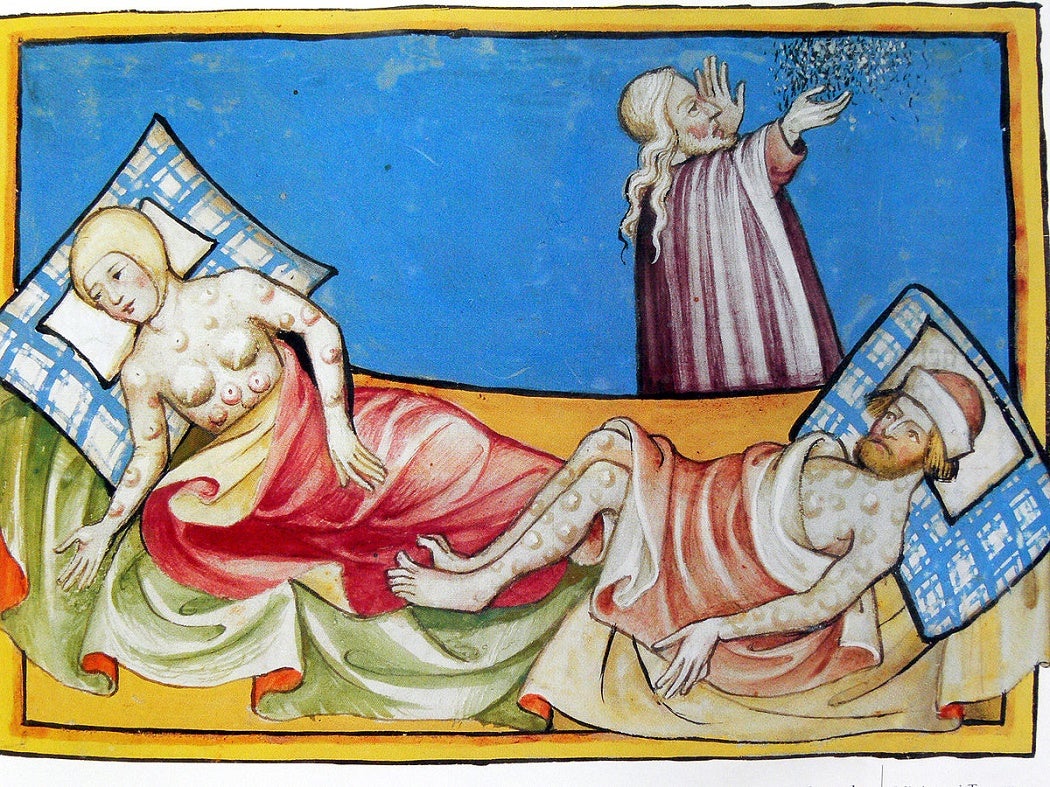Modern health authorities combating the Ebola virus in West Africa might look into the past for inspiration.
During the medieval period and into the early 20th century, plague—The Black Death—was a feared and incurable infection, spreading rapidly through Europe along trade routes. As a result, authorities in port cities through the ages were especially vigilant in devising protocols for surveillance and quarantine.
Some of the earliest descriptions of the Black Death come from the Roman trade city of Pelusium, in Egypt A.D.542. In distressing commentary that could have been written about Ebola last week, Roman witnesses described how the plague hit everywhere, leaving streets deserted and bodies unburied for days. 800 years later, when the plague hit Europe in strength, health authorities were better prepared. Some of the basic precautions that were absent during the early days of Ebola were in place. These included a professional health corps specifically assigned to monitor incoming ships in Venice, an idea which would eventually lead to the World Health Organization.
Italian cities also led the way in another important disease control measure, record keeping. Rather than just recording burials, authorities in 15th century Milan kept a “Book of the Dead,” a record of all deaths in the city, not just burials. In this manner, plague cases were tracked separately. As with Ebola, authorities had great difficulty differentiating actual plague cases from other illnesses, but thanks to these detailed records suspected outbreaks were quarantined beyond the city walls. Unfortunately, despite these efforts, the 14th century European plague epidemic is estimated to have claimed up to 25,000,000 lives.
It was almost 600 years before the means were finally developed to limit outbreaks. The world’s last major plague epidemic ravaged China and India for decades before spreading around the globe via steamship in the early 20th century. Once again, port cities were at the front lines but by this time they were better prepared with improved sanitation and strict quarantine procedures. By now, health authorities were aware that plague was spread by fleas and rats, so the appearance of plague meant an immediate effort to reduce the rodent population. Some of the most innovative measures were enacted in San Francisco, where early 20th century building codes demanded that all smaller buildings had to be raised a couple of feet off the ground—in order to allow access for dogs, cats, weasels, and skunks. This four-legged health corps was rightly judged to be the most effective rat patrol available. Further rules directed the rat proofing of food storehouses and all garbage.
As a result of these and other measures, the 20th century plague pandemic took a terrible toll in China and India but was limited everywhere else. Clearly, not all of these lessons are applicable to Ebola—dogs and skunks are of no use against a disease that spreads directly from person to person through body fluids. Nevertheless, without the actions of some of these port city public health pioneers, the Black Death might have been much worse. Despite the early mishandling of the Ebola outbreak, the world has been mostly spared devastating pandemic outbreaks for at least 100 years. Our good health is a tribute to centuries of innovation in infection containment.







